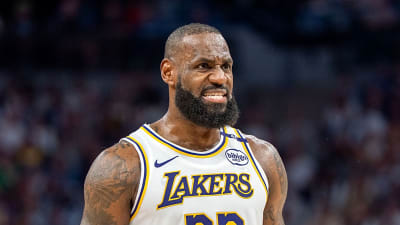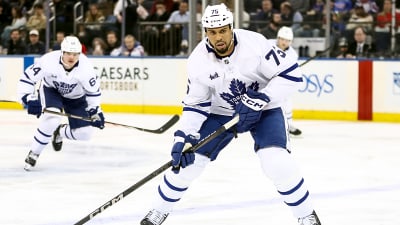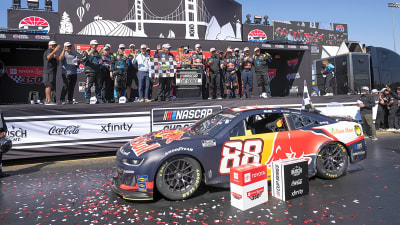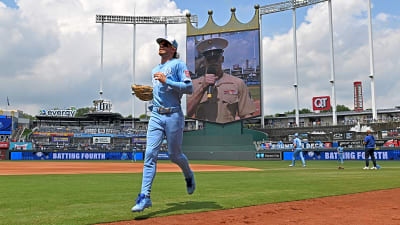Very likely gone
JD Thompson’s story at Vanderbilt is an incredible story of perseverance and self-belief, it’s also likely over. Thompson arrived on Vanderbilt’s campus as a small-town kid that didn’t know if he’d ever be able to make it at Vanderbilt and left it as one of the SEC’s better Friday night guys. His body of work paired with his stuff and improved ability to get out of trouble is enough to make him MLB Pipeline’s 66th ranked prospect heading into the MLB Draft.
If Thompson is selected in that range, he’d be silly to return for his senior season at Vanderbilt. While a few of his teammates don’t have the same level of buzz surrounding them, they’d likely be smart to take their pro ball opportunity and run in a similar way.
Likely gone, but could return
Vanderbilt starter Cody Bowker left some things to be desired with a few consecutive short starts down the stretch, but evaluators appear to like his ceiling and mental makeup, the Pipeline rankings have him at 187. Perhaps if he returns to school, his stock could rise. He’d likely have to become an ace, though.
Vanderbilt reliever and D1 Baseball All-American Sawyer Hawks is ranked 225 and also appears to be in a position that will make returning an after thought. Things could get interesting if he falls out of the top 10 rounds or a team doesn’t meet his number, though.
RJ Austin–Vanderbilt’s gold-glove center fielder–is an interesting case here. Perhaps he’s on the fringe of very-likely gone and up in the air more than he is a lock to be gone. Austin is MLB Pipeline’s 112th ranked player in the field, but is coming off of his worst offensive season at the college level by a significant margin.
Austin hit for a career-low batting average of .257, a career-low OPS of .736 as well as a career-low two home runs in 2025. The Vanderbilt center fielder also made the final out in Vanderbilt’s season-ending loss to Wright State and could have some sense of unfinished business as a college player.
Evaluators fell in love with Austin’s athleticism, versatility and ability to emerge as a leader within Tim Corbin’s program at a young age and may be willing to overlook Austin’s offensive woes, though. Coming back as a college senior while looking to improve draft stock is a difficult ask and requires a significant offensive leap.
Austin returning to school would be betting on himself in every sense of the word. Perhaps the door isn’t entirely closed on a return, though.
Up in the air
Vanderbilt first baseman Riley Nelson’s decision is the biggest story surrounding Vanderbilt’s program heading into the draft. Nelson could be selected somewhat early on day two of the draft, which makes the slot value of the pick important.
Indications from those with knowledge of the situation are that the chances of Nelson returning to school truly are 50/50. Nelson–who spent just one season at Vanderbilt–is said to love Vanderbilt’s program and isn’t willing to leave it without a better opportunity arising. The Vanderbilt first baseman has been told he wasn’t good enough time and time again throughout his career and appears to value the belief Vanderbilt had in him as a junior college transfer.
Nelson bypassed the Cape this summer in order to train at Vanderbilt with his teammates–including Brodie Johnston and Rustan Rigdon, who did the same–but that doesn’t necessarily mean anything one way or another.
From a pure baseball standpoint, Nelson would likely be a no brainer to sign with a team in the draft had he hit 12 or 13 home runs rather than the eight that he ultimately ended up with. Nelson was Vanderbilt’s most productive offensive player over the course of the season and is one of its better defensive first basemen in recent memory, but evaluators have cited reservations as a result of his lack of home run production and Division-I experience.
The upside for Nelson returning is that his home run production could easily improve. The ones he did hit in 2025 were hardly wall scrapers, which lends credence to the claim that he could take a significant step forward in power in 2026. Even if Nelson doesn’t, his return in 2026 would make Vanderbilt significantly more dynamic offensively.
Vanderbilt reliever Tommy O’Rourke also has an interesting case. His 2025 sample size wasn’t large as he came off of injury, but he’s been on MLB radar for a long time and it appears he’s open to both signing with a team and returning to Vanderbilit for his final year of eligibility.
O’Rourke could cash in on his health finally being where he’d like it, or could bet on himself in a return to Vanderbilt that could see him take on a larger role in the bullpen.
Likely to return
Perhaps Vanderbilt’s two biggest draft risks outside of the aforementioned ones are returning second baseman Mike Mancini as well as Washington State outfield transfer Logan Johnstone. Mancini has yet to make a declaration in terms of his future while Johnstone says he hasn’t made a decision one way or another in regards to the draft.
Mancini could likely benefit from another college season after seeing his power take a hit in 2025, presumably due to an injury. It appears that it will be difficult to take Johnstone off of Vanderbilt’s campus due to his desire to end his college career with a winning season.
Vanderbilt also has draft-eligible juniors Chris Maldonado and Levi Huesman set to return, both appear to be likely to come back along with draft-eligible sophomores Colin Barczi, Luke Guth and Miller Green. Huesman could be appealing due to his pre-college scouting report and emergence as a high-leverage lefty option that often controlled the zone. Vanderbilt transfer reliever Jacob Faulkner is also draft eligible, but is likely to make it to campus.
More must-reads:
- First-round draft pick Jahdae Barron finally inks rookie deal with Broncos
- LeBron James' agent warns NBA media about his retirement
- The 'MLB Home Run Derby champions' quiz
Breaking News
Trending News
Customize Your Newsletter
 +
+
Get the latest news and rumors, customized to your favorite sports and teams. Emailed daily. Always free!








